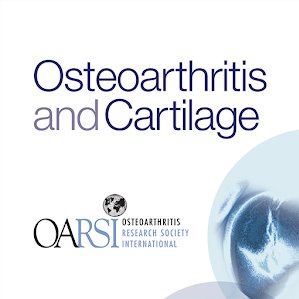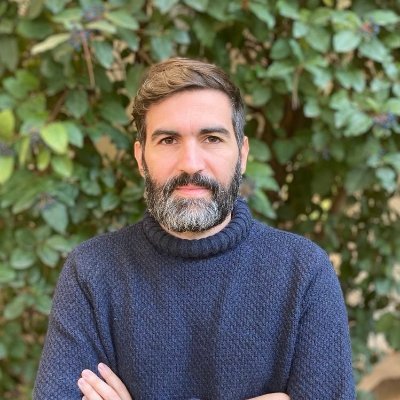
Rik Lories
@TissueHomandDis
Followers
795
Following
1K
Media
79
Statuses
778
Head Division of Rheumatology UZ Leuven, Head Department of Development & Regeneration and Director Skeletal Biology & Engineering Research Center KU Leuven
Leuven, Belgium
Joined January 2013
How did Zhou et al. monitor the temporal profiling of lipid mediators in the synovium and tibial plateau during joint inflammation🧐? Learn out this work in this month's #EditorsChoice paper for #Basic #Science. 🔗 https://t.co/gLgBfQHgvk
@TissueHomandDis
@SilviaMonteag
0
2
2
New Viewpoint in @TheLancetRheum : synovial inflammation may not fit into “endophenotype” boxes. We propose a continuous spectrum: biology flows in gradients, not categories. Great initiative by Clément Triaille -
0
0
0
CYCLING IS THE MOST BEAUTIFUL SPORT IN THE WORLD ❤️ 📷: andrea_pialo
38
400
6K
Our recent Advanced Science paper, explores the development of #magnetically augmented cartilaginous #organoids.This 4D 🧲#biofabrication approach leads to a multifaceted influence on #bioassembly, ECM organisation, 🦿gene pathways and in vivo outcome🦴! https://t.co/VjjZJvWMAw
advanced.onlinelibrary.wiley.com
Magnetically augmented biohybrid cartilaginous microtissues enable remote microtissue motion control and assembly as well as targeted differentiation. This study demonstrates accelerated endochondr...
2
5
45
⚡️Thrilled to announce that our @FWOVlaanderen project was funded! Looking fwd to further collaborate with the co-PIs @BartSmeets16 & @DimitriosSakellariou! We will explore the design of remotely controllable #organoid implants for skeletal regeneration!! @DevReg_KULeuven
1
1
12
Respiratory muscle dysfunction can be both a cause and consequence of respiratory failure. It is often reversible and should be diagnosed and treated. This review covers available assessment and treatment options in acute and chronic respiratory failure.
0
30
68
Always dreamed of a work-out of (your) muscles in a lab? This is your chance! We have a PhD vacancy on '4D bioprinting of vascularized, myogenic tissue based on hybrid nanocomposites'. Join our Tissue Engineering Lab at KU Leuven Campus Kortrijk! https://t.co/7RXulXUN2w
0
3
12
I am more than excited that our manuscript (written by @ZsJeneiLanzl and myself) has been accepted for publication👇👇👇👇👇👇 Osteoarthritis year in review 2024: biology - Osteoarthritis and Cartilage
oarsijournal.com
Osteoarthritis (OA) research is a fast-growing and extremely wide field, in which a substantial increase in knowledge has been achieved over the last year. It covers many different topics, however, a...
1
6
32
Unlocking a Detrimental Role of IGF1 in Osteoarthritis: A New Target for Therapeutic Intervention? | Research Communities by Springer Nature
communities.springernature.com
Osteoarthritis is a common joint disease that leads to pain, stiffness and limited mobility, for which no effective treatments are available. My team and I, driven by the desire to address this...
2
4
15
Finally, a big shout-out and thank you to everyone who worked on this project: @AnaEscribano7 Frederique Cornelis @AstridRoover An Sermon @FredCailotto @SilviaMonteag. Thank you @FWO & @KULeuven for supporting this study! @DevReg_KULeuven @UZLeuven. https://t.co/BRfLfV9KEE 14/14
0
1
6
We hope this research brings us one step closer to finding a disease-modifying therapy for osteoarthritis. Stay tuned as we explore new ways to target the Wnt-IGF1 axis in future therapeutic approaches. 13/14
1
1
5
Finally, decreasing IGF1 in articular chondrocytes from OA patients favors the restoration of a healthy molecular profile. By reducing IGF1, we can protect the joint from Wnt-driven damage while preserving cartilage integrity! 12/14
1
0
2
We then investigated the translational implications of the identified Wnt/IGF1 link using a clinically relevant mouse model of posttraumatic OA. Again, Igf1 deficient mice were protected against OA. 11/14
1
0
1
We also found TCF/LEF binding sites in the IGF1 gene promoter, highly conserved across species, indicating that IGF1 is a direct Wnt target gene! This provides a clear molecular mechanism for how Wnt signaling leads to increased IGF1 in the joint, driving OA. 10/14
1
0
1
To dive deeper in the molecular mechanisms underlying the Wnt-IGF1 link, we used luciferase reporter assays and chromatin immunoprecipitation (ChIP) experiments. Wnt signaling directly increases IGF1 as Wnt transcription factor TCF4 binds to the IGF1 gene promoter. 9/14
1
0
1
We also found that chondrocyte hypertrophy, where cartilage cells lose their healthy identity, was prevented in Igf1-deficient mice. This is critical because hypertrophic chondrocytes, positive for collagen type X, contribute to OA progression. 8/14
1
0
1
IGF1 is well-known for its role in growth and tissue repair, but its role in OA was difficult to define. We used mice with cartilage-specific Igf1 deletion. These mice developed less OA when Wnt signaling was hyper-activated, showing less cartilage damage! 7/14
1
0
2
We validated this in vivo, using 2 models of Wnt hyper-activation, DOT1L-inhibited mice and Frzb KO mice (lacking a Wnt antagonist). Both models exhibited increased IGF1 expression in their cartilage, supporting the Wnt-IGF1 connection. Why is this important for OA? 6/14
1
0
1
We began with human chondrocytes in which #DOT1L, a negative epigenetic regulator of Wnt, was inhibited, leading to hyper-activated Wnt signaling. Our bioinformatics analyses showed IGF1 as a prominent node in the transcriptional network—suggesting a Wnt-IGF1 link. 5/14
1
0
1











